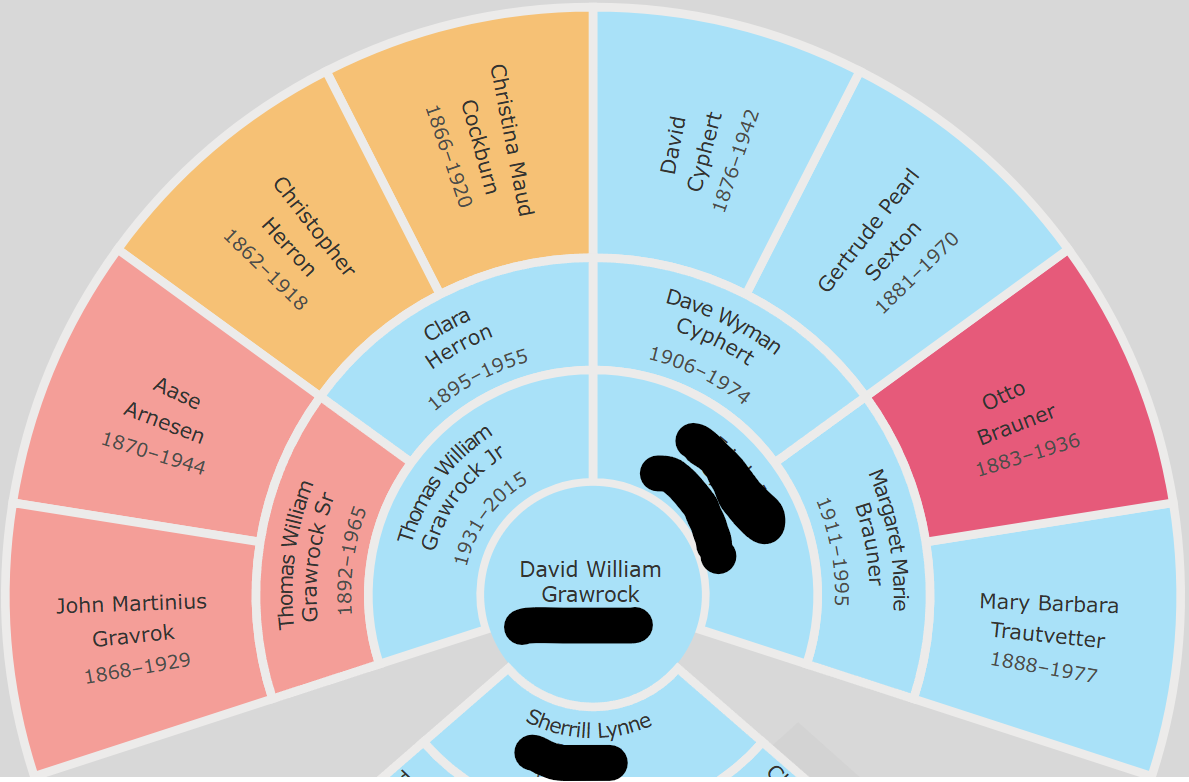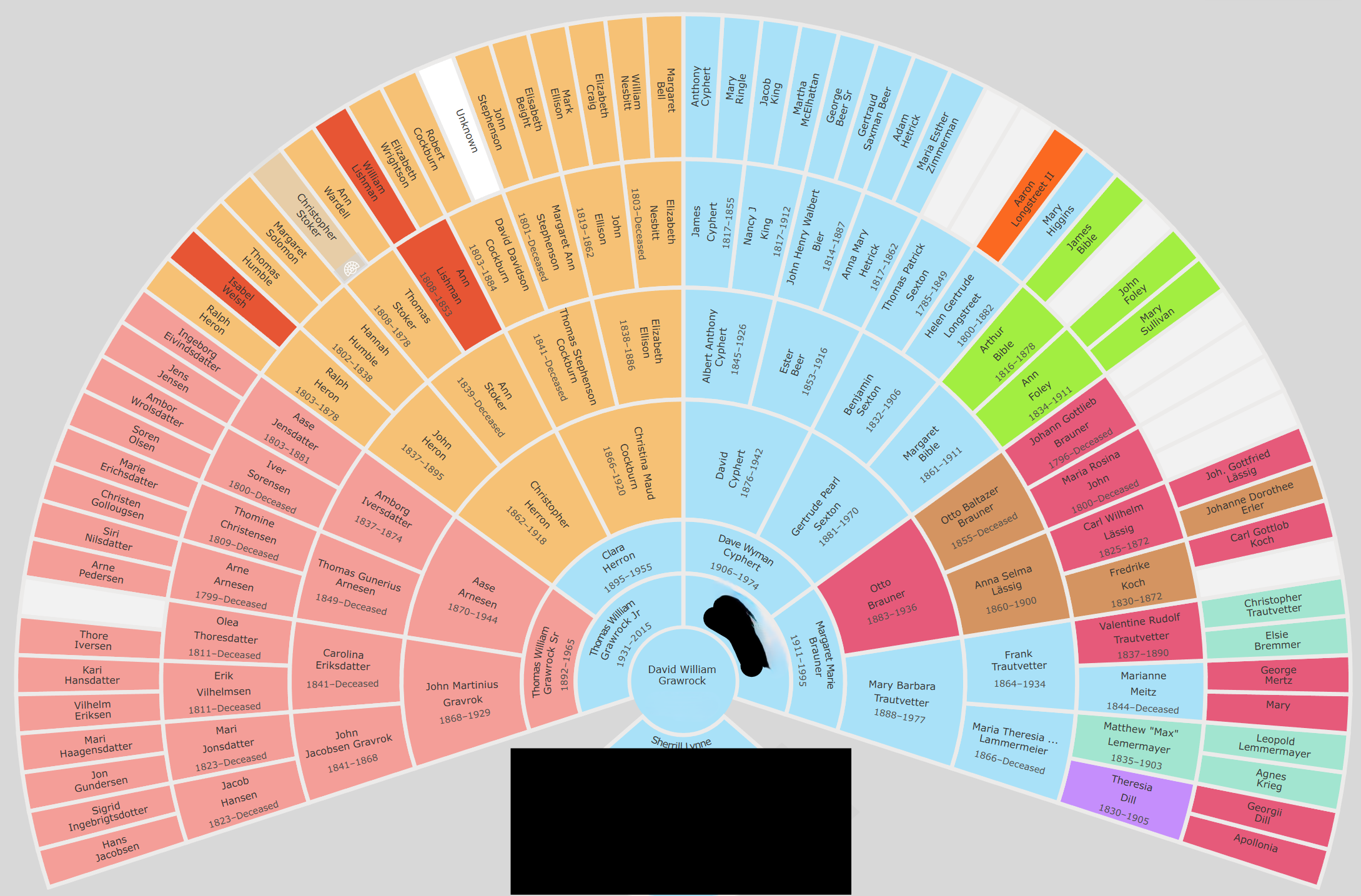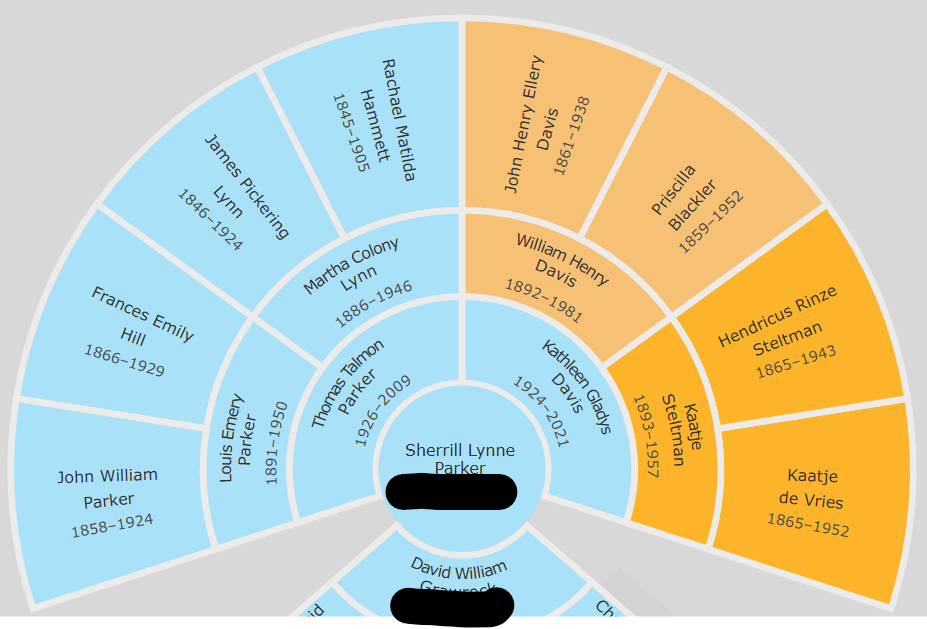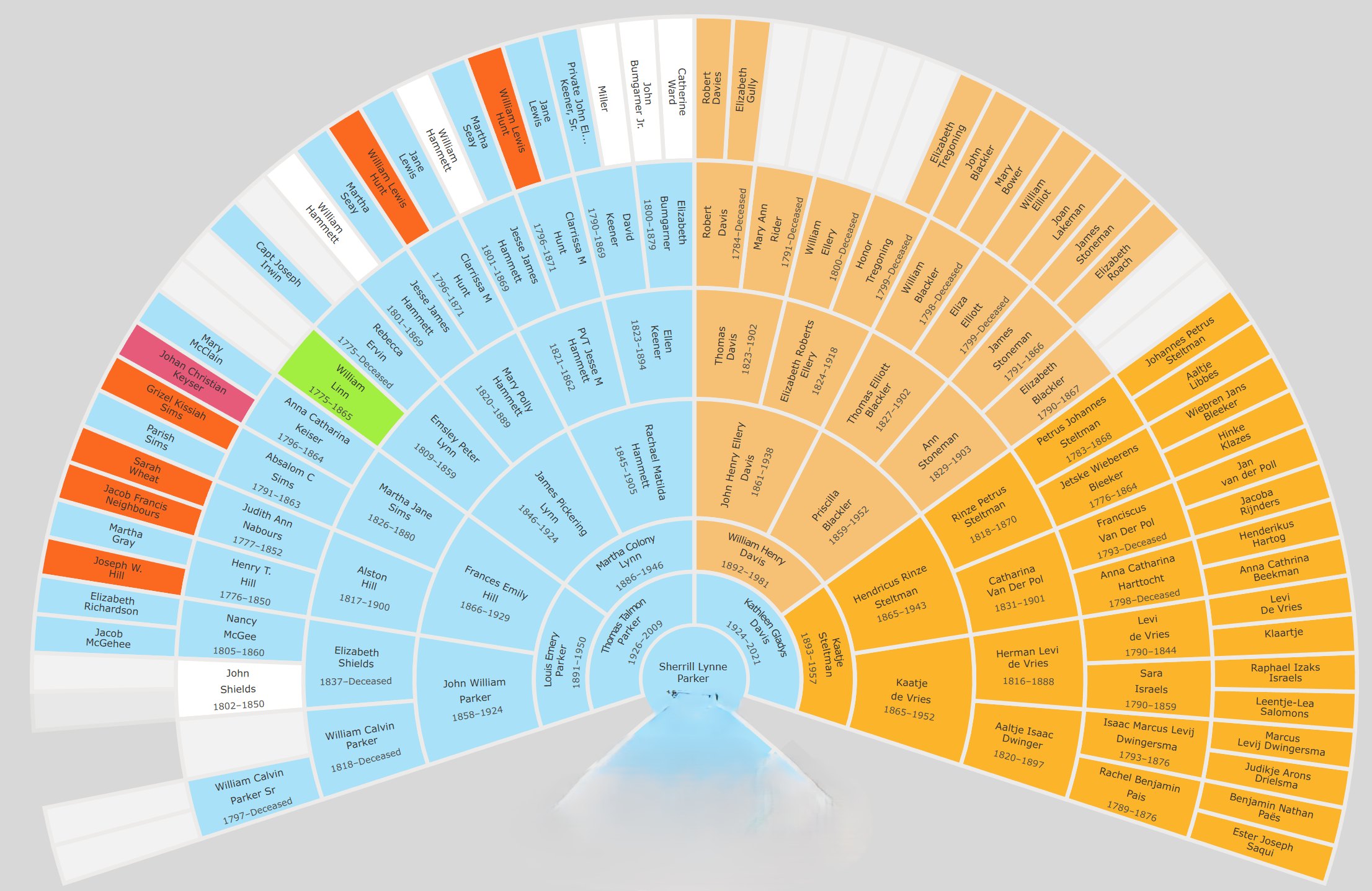About us - What experience do you have?
What have you done in the past.
What have you done in the past.
The front page detailed a bit of my experience with this record. But there is more to this story. In a mea culpa, I admit to the fact that I was entirely fluxomed when presented with those Norwegian parish registers. Who knew that Norwegian records would be written in Norwegian and not English. Thankfully a kind worker hooked me up with a Norwegian to English cheat sheet, and along with helping me to thread a microfilm reader I was successful that day.
 This fan chart is a bit misleading as at the start I didn't have dates for these individuals. I had a few but details were very sparse.
This fan chart is a bit misleading as at the start I didn't have dates for these individuals. I had a few but details were very sparse.
So I started researching. I found that Norwegian parish records go back easily to the 1600's and after learning to read the parish records, that part of the fan chart fleshed out nicely. But each section of the fan chart taught me something new. Herron-Cockburn is from Northeast England. Now I learned about different census records, Church of England registers, and bishop's transcripts. The Cyphert-Sexton are Colonial with an 1800's Irish branch. I learned about pre-revolution immigration, revolutionary soldiers, and how Pennsylvania Dutch aren't Dutch but German. Brauner-Trautvetter are German. More immigration records, emigration port records, how old German handwriting isn't quite the same as Norwegian, though they are very close at times. All in all a great eduction just from doing my own family.

That is certainly a change from the starting point. Still some gaps, but they are difficult genealogical problems. For instance, the Norwegian gap is due to a parish fire that destroyed 70 years of records. While there are older records, there isn't a reliable trail from the younger generation to their grandparents. Add in the difficulty with patrynomics instead of surnames, and you have a hole in the fan chart. Research continues on all lines. The level up work goes back to ensure a level of consistency in the research performed many years ago.
 But our experience didn't end with just my genealogy, we worked Sherrill's too. Here we had some help as Sherrill's mom was a dedicated, but slightly gullible, researcher. On her father's side, those are Southern roots, Oklahoma, Mississippi, Alabama, and Georgia. Getting them out of the South has been difficult. Her mom's side is Southeastern English, Devon and Cornwall, and Dutch. From this research we learned about burned counties, boundary changes, land records, and wills.
But our experience didn't end with just my genealogy, we worked Sherrill's too. Here we had some help as Sherrill's mom was a dedicated, but slightly gullible, researcher. On her father's side, those are Southern roots, Oklahoma, Mississippi, Alabama, and Georgia. Getting them out of the South has been difficult. Her mom's side is Southeastern English, Devon and Cornwall, and Dutch. From this research we learned about burned counties, boundary changes, land records, and wills.
 The Dutch side provides a fascinating look at how families lose information over time. Sherrill's mom had heard that there might be some Dutch Jews in the ancestry but nothing had ever been fully researched.
The Dutch side provides a fascinating look at how families lose information over time. Sherrill's mom had heard that there might be some Dutch Jews in the ancestry but nothing had ever been fully researched.
In conjunction with my certification portfolio, I was looking for a family to use for the KDP, or 3 generations, and I looked at one of Sherrill's Dutch ancestors, Herman Levi de Vries. He had 15 children 13 of which had families of their own. Well that was too big for the KDP but I found something. Herman was Jewish. Not a surprise with a middle name of Levi, but we hadn't really known that. What we found that being a Dutch Jew in 1940 puts the family in the middle of the Holocaust. The result was a deep dive into the Arolsen Archives, Yad Vashem, the Holocaust Memorial Museum, and record keeping of the Dutch. The information led to my first genealogical book Herman Levi de Vries, a Lost Family. We had no idea that Sherrill's family was decimated in the Holocaust. That brought the Holocaust from something that happened to others to her family was lost in Auschwitz, Sobibor, and others.
From that simple starting point, David and Sherrill started to fill out their fan charts. What that taught them was how to research in Norway, Pennsylvania, New Jersey, Colonial New Amsterdam, Northeast and Southwest England, Germany, Southern states, the Netherlands, and Dutch Jews.